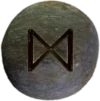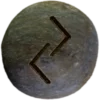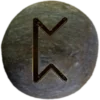Last Updated on November 25, 2024
Table of Contents


Natural cycles deeply influence Norse beliefs, reflecting life’s constant shifts. These cycles, often personified as gods or forces, embody birth, death, and renewal. Nature’s shifts in seasons, day and night, and life and death shape the Norse worldview. For example, Ragnarök, or the world’s end, marks both destruction and rebirth, representing a crucial renewal cycle. After Ragnarök, the world doesn’t vanish but renews, giving life a fresh start. This concept stresses resilience and rebirth after hardship.
Winter’s harshness and summer’s life-giving warmth hold symbolic meaning. Winter, or vetr (pronounced “veh-ter”), is a time of survival and introspection, while summer, sumar (“soo-mar”), represents life’s fullness and activity. Together, these seasons remind people of their reliance on natural rhythms. Similarly, the moon’s cycles guide important times, especially in farming and fishing communities where it symbolizes guidance and timing.
Another powerful cycle centers on Yggdrasil, the great World Tree. Yggdrasil connects different realms and sustains all beings. It embodies life’s resilience through time and symbolizes the link between worlds. Water, too, holds importance, with rivers like Élivágar (“eh-lee-vah-gahr”) and wells like Mímisbrunnr (“mee-miss-brunn-er”) symbolizing knowledge, wisdom, and renewal. Their ever-flowing nature reminds us of knowledge’s growth and how wisdom renews us.
Norse mythology ![]() presents cycles as interconnected. Nothing exists alone; all life relies on another part of nature. Humans, animals, and gods share this web of life, and they all follow natural laws and seasons. The Norse gods themselves, like the god Baldur, go through life cycles. Baldur’s death and return signify rebirth, echoing nature’s cycles of growth, death, and renewal.
presents cycles as interconnected. Nothing exists alone; all life relies on another part of nature. Humans, animals, and gods share this web of life, and they all follow natural laws and seasons. The Norse gods themselves, like the god Baldur, go through life cycles. Baldur’s death and return signify rebirth, echoing nature’s cycles of growth, death, and renewal.
Runes Associated with Natural Cycles
The Elder Futhark rune Jēra (pronounced “yeh-rah”) symbolizes the natural cycles, especially the harvest season. This rune ![]() marks yearly cycles and embodies patience, growth, and reward for hard work. Another important rune, Dagaz (“dah-gahz”), symbolizes dawn and transformation, highlighting day’s cyclical nature. Together, these runes offer guidance during natural shifts, reminding people of life’s rhythm.
marks yearly cycles and embodies patience, growth, and reward for hard work. Another important rune, Dagaz (“dah-gahz”), symbolizes dawn and transformation, highlighting day’s cyclical nature. Together, these runes offer guidance during natural shifts, reminding people of life’s rhythm.
Importance in Asatru
In Asatru, natural cycles hold central importance. They inspire followers to honor each season’s gifts and challenges. Rituals and observances reflect these cycles, emphasizing nature’s power in shaping life. Asatruar look to the changing seasons, planting and harvest times, and celestial movements for wisdom and direction. Natural cycles remind followers of their place in the world and deepen their bond with nature.

